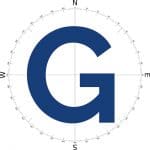If you didn’t follow the link below to Bob DuCharme’s response to my January 13 posting on Why it is Difficult to Include Semantics in Web Content, you should read it. Bob does a great job describing tools in use to include semantics in Web content. Bob is a very smart guy. I like to think the complexity of his answer is a good illustration of my point that adding semantics is not easy. Anyway, his response is clearly worth reading and can be found at http://www.snee.com/bobdc.blog/2009/01/publishers-and-semantic-web-te.html.
Also, I have known Bob for some time. I am reminded that a while back he wrote an interesting article about XML data produced by his TiVo device (see http://www.xml.com/pub/a/2006/02/15/hacking-the-xml-in-your-tivo.html). I was intrigued how XML had begun to pop up in everyday things.
Ever since that TiVo article, I think of Bob every time XML pops up in unexpected everyday places (it’s better than associating him with a trauma). Once in a while I get a glimpse of XML data in a printer control file, in Web page source code, or as an export format for some software, but that sort of thing is to be expected. We all have seen examples at work or in commercial settings, but to find XML data at home in everyday devices and applications has always warmed my biased heart.
Recently I was playing a game of Sid Meier’s Civilization IV (all work and no play and so on….) and I noticed while it was booting up a game that one of the messages said “Reading XML FIles”. My first thought was “Bob would like to see this!” Then I was curious to see how XML was being used in game software. A quick Google search and the first entry, from Wikipedia (http://en.wikipedia.org/wiki/Civilization_IV#cite_note-10), says “More game attributes are stored in XML files, which must be edited with an external text editor or application.” Apparently you can “tweak simple game rules and change or add content. For instance, they can add new unit or building types, change the cost of wonders, or add new civilizations. Players can also change the sounds played at certain times or edit the play list for your soundtrack.”
I poked around in the directories and found schemas describing game units, events, etc. and configuration data instances describing artifacts and activities used in the game. A user could, if they wanted to, make buying a specific building very cheap for instance, or have the game play their favorite music instead of what comes with the game. That is if they know how to edit XML data. I think I just found a way to add many hours of enjoyment to an already great game.
I wonder how much everyday XML is out there just waiting for someone to tweak it and optimize it to make something work better. A thermostat, a refrigerator, or a television perhaps.

